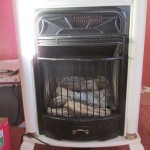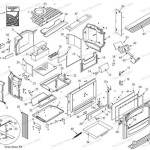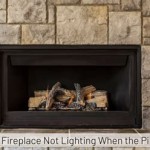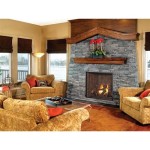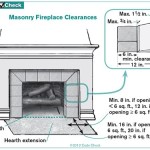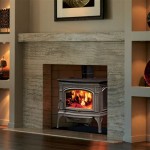Ethanol Fireplace Inserts: A Comprehensive Guide
Ethanol fireplace inserts represent a modern approach to home heating and ambiance creation. Unlike traditional wood-burning fireplaces, these inserts utilize denatured ethanol, a renewable fuel source, to produce a clean-burning flame. This article provides a detailed overview of ethanol fireplace inserts, covering their functionality, advantages, installation considerations, safety aspects, and maintenance requirements.
The fundamental principle behind an ethanol fireplace insert involves the combustion of liquid ethanol within a designated burner. The burner, typically constructed from stainless steel, holds the fuel and facilitates controlled evaporation and ignition. Once ignited, the ethanol vapor combusts, producing heat, light, and carbon dioxide and water vapor as byproducts. The absence of solid fuels like wood or gas eliminates the production of smoke, soot, ash, and harmful emissions associated with traditional fireplaces. This characteristic makes ethanol fireplace inserts a viable option for individuals seeking a more environmentally conscious and low-maintenance heating solution.
Ethanol fireplace inserts are available in various sizes and designs, allowing for integration into existing fireplace cavities or incorporation into custom-built enclosures. The aesthetic flexibility of these inserts contributes to their appeal, enabling homeowners to achieve a desired look ranging from classic to contemporary. Furthermore, the ease of installation and absence of venting requirements distinguish ethanol fireplace inserts from other fireplace options.
Advantages of Ethanol Fireplace Inserts
Ethanol fireplace inserts offer several distinct advantages over traditional wood-burning or gas fireplaces. These advantages contribute to their increasing popularity among homeowners seeking a convenient, aesthetically pleasing, and environmentally responsible heating solution. Understanding these benefits is crucial for making an informed decision when considering fireplace options.
One of the primary advantages is the clean-burning nature of ethanol. The combustion byproducts are primarily carbon dioxide and water vapor, significantly reducing the emission of pollutants compared to wood-burning fireplaces. This clean burn makes ethanol fireplace inserts a suitable choice for individuals with respiratory sensitivities or concerns about indoor air quality. Furthermore, the absence of smoke and soot eliminates the need for chimney cleaning and reduces the risk of chimney fires.
Another significant advantage is the ease of installation. Ethanol fireplace inserts typically do not require venting or gas lines, simplifying the installation process and reducing associated costs. This feature allows for greater flexibility in placement, as the insert can be installed in various locations within a home without the need for extensive modifications to the existing structure. Many models are designed for straightforward drop-in installation into existing fireplace openings.
Aesthetically, ethanol fireplace inserts offer a modern and visually appealing alternative to traditional fireplaces. The clean lines and minimalist designs of many inserts contribute to a contemporary aesthetic. The flame produced by ethanol combustion is often considered more visually appealing than the flame produced by gas fireplaces, offering a natural and dancing effect. The availability of various burner designs and decorative accessories further enhances the aesthetic possibilities.
Finally, ethanol fireplace inserts provide a convenient and low-maintenance heating solution. The combustion of ethanol produces heat, contributing to supplemental heating in a room. The low maintenance requirements, including the absence of ash removal or chimney cleaning, save time and effort for homeowners. The ease of refueling, typically involving pouring ethanol into the burner reservoir, further adds to the convenience.
Installation Considerations for Ethanol Fireplace Inserts
Proper installation is critical for the safe and efficient operation of an ethanol fireplace insert. While the installation process is generally simpler compared to traditional fireplaces, careful consideration of several factors is necessary to ensure optimal performance and prevent potential hazards. These considerations encompass site preparation, ventilation, clearance requirements, and fuel storage.
Before installing an ethanol fireplace insert, it is essential to prepare the designated area. This involves ensuring that the surface is level and stable, capable of supporting the weight of the insert. If installing into an existing fireplace cavity, thoroughly clean the area to remove any debris or ash. Inspect the surrounding walls and flooring for any combustible materials and ensure that they meet the manufacturer's specified clearance requirements.
While ethanol fireplaces do not require venting, adequate ventilation in the room is still important to mitigate the buildup of carbon dioxide and water vapor. Ensure that the room has adequate natural ventilation, such as windows or doors that can be opened periodically. For smaller spaces, consider using a room air purifier with a carbon filter to further enhance air quality. Regular monitoring of carbon dioxide levels is advisable, particularly in enclosed spaces.
Adhering to the manufacturer's specified clearance requirements is paramount for preventing fire hazards. Ensure that the insert is installed at a safe distance from combustible materials such as curtains, furniture, and exposed wood. Consult the product manual for specific clearance dimensions and follow them precisely. Failure to comply with these requirements can lead to overheating and potential fire risks.
Safe fuel storage is another critical aspect of ethanol fireplace insert installation. Store ethanol fuel in a cool, dry, and well-ventilated area, away from direct sunlight and heat sources. Keep the fuel containers tightly sealed to prevent evaporation and spills. Never store ethanol fuel near the fireplace or any other potential ignition sources. It is also crucial to keep the fuel out of reach of children and pets. Consider using a designated storage cabinet for added safety.
In addition to these considerations, it is highly recommended to consult with a qualified professional for installation, especially if you are unfamiliar with fireplace installations or have any concerns about the safety or suitability of your chosen location. A professional can ensure that the installation is performed correctly and in compliance with all applicable building codes and safety regulations.
Safety and Maintenance of Ethanol Fireplace Inserts
Maintaining the safety and longevity of an ethanol fireplace insert requires adherence to specific guidelines and routine maintenance procedures. These practices ensure safe operation, prevent potential hazards, and extend the lifespan of the insert. Safety considerations involve the proper handling of ethanol fuel, fire safety precautions, and monitoring of carbon monoxide levels. Maintenance procedures include regular cleaning, inspection, and burner maintenance.
The safe handling of ethanol fuel is paramount. Always use denatured ethanol specifically designed for use in ethanol fireplaces. Never use gasoline, kerosene, or other flammable liquids, as they can produce dangerous fumes and pose a significant fire hazard. When refueling the insert, ensure that the burner is completely cool and extinguished. Avoid overfilling the burner reservoir, as this can lead to spills and potential fires. Clean up any spills immediately with a damp cloth. Never add fuel to a burning or hot burner.
Fire safety precautions are essential when operating an ethanol fireplace insert. Always supervise the fireplace while it is in use. Keep flammable materials, such as curtains, furniture, and paper, away from the flame. Never leave the fireplace unattended, especially when children or pets are present. Keep a fire extinguisher readily available in case of emergency. Educate all household members on the proper use of the fireplace and fire safety procedures.
While ethanol fireplaces produce minimal carbon monoxide, it is still prudent to install a carbon monoxide detector in the vicinity of the fireplace. Regularly test the detector to ensure that it is functioning properly. If the detector alarms, immediately evacuate the area and ventilate the room. Contact a qualified professional to inspect the fireplace and ventilation system to identify and address any potential issues.
Regular cleaning is essential for maintaining the aesthetic appeal and operational efficiency of an ethanol fireplace insert. Clean the exterior surfaces of the insert with a soft cloth and mild detergent. Avoid using abrasive cleaners or solvents, as they can damage the finish. Clean the burner regularly to remove any residue or buildup. Consult the product manual for specific cleaning instructions. Regularly inspect the insert for any signs of damage or wear, such as cracks, leaks, or corrosion. Address any issues promptly to prevent further damage and ensure safe operation.
Burner maintenance is crucial for optimal performance. Over time, the burner may accumulate residue or deposits that can affect the flame quality and efficiency. Clean the burner regularly using a soft brush or cloth. Some burners may require periodic disassembly for thorough cleaning. Consult the product manual for specific burner maintenance instructions. If you notice any signs of damage or malfunction, such as uneven flames or difficulty igniting, contact a qualified professional for repair or replacement.
By adhering to these safety and maintenance guidelines, homeowners can enjoy the benefits of an ethanol fireplace insert while minimizing potential risks and ensuring its long-term performance.

Ethanol Fireplace Inserts

Bioethanol Fireplace Insert Hf 2 700 Ignisial Paris Remote Controlled

Ethanol Burner Inserts Afire Smart Automatic Remote Controlled

Ignis Black Ethanol Fireplace Burner Insert Eb4800

Vb2 Ethanol Burner Convert Traditional Fireplaces Ecosmart Fire

Ignis Black Ethanol Insert Ventless Fireplace Eb2400

Bioethanol Burner Chamber Insert Mini Fire Cassette The Stove House

Buy Firebox 1100cv Curved Ethanol Fireplace Ecosmart Fire

Ethanol Fireplace Automatic Smart Remote Controlled Afire

Ethanol Burners Bio Inserts

